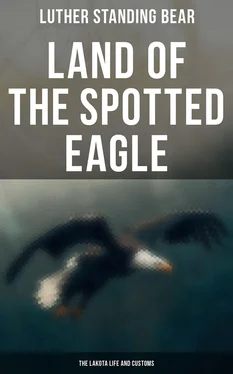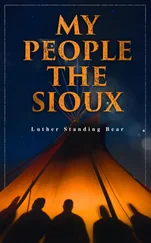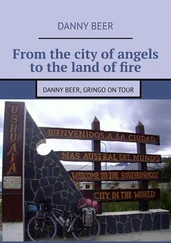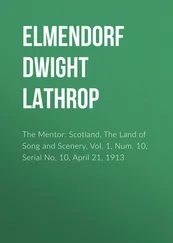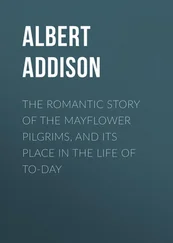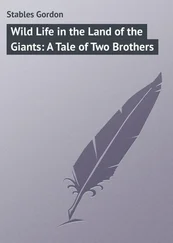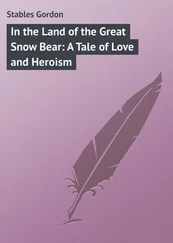Even the games which boys played put their strength to test, for most of them called for strenuous action. One of these games was called canhuyapi, meaning ‘wooden leg.’ White boys have this game, calling it stilts. Canhuyapi was a follow-the-leader game, the strongest boy being the leader. Through deep water, mud, snow-banks, brush thickets, and high grass, the leader took his followers, testing to the utmost their strength and courage. It was great fun, but when it came to going up and down steep banks or rocky places, the ones who tumbled were many, and, once down, one was out of the game.
Contests for strength were played in the water and the divers would search for a rock or root of a tree to hold, in order to see who could stay below the surface the longest. In winter the contestants plunged into the icy waters to see how much cold they could endure.
All boys did not have equal enthusiasm for all games, but one thing they all tried to do was to mount while their horses were running full speed. Running a few steps by the side of the horse, then grasping its mane and springing in the air, the rider was lifted by the motion of the animal. Another quite necessary thing to learn was to mount at the back of a rider who was going at full speed. In case of a battle, if a warrior were unhorsed, another could save him by riding swiftly by. The one on foot grasped the tail of the horse and leaped to the back of the rider and to safety. This was hard to do, but easily practiced with gentle ponies. Such training developed skillful horsemen.
A riding and shooting game was hanpa kute. A pole was planted in the earth and a moccasin placed on top of it for a target. Riding by as fast as possible, we shot an arrow at the moccasin. In order to be fair the rider must go by the target at full speed. If he slowed his pony down as he neared the pole he was ruled out of the game.
Back of all this physical attainment was the further objective of tenacity and poise. In play we imagined ourselves in the midst of the enemy in all sorts of conditions—on foot, surrounded, wounded, and without weapons—and with bullets and arrows flying toward us. The tighter the place in which a warrior found himself, the more resourceful he needed to be. Nerve, pluck, and quick action were necessary. These saved a warrior’s life when the odds were against him. So one never gave up. It was fight to the last, and that spirit saved many a brave. But even this was not all. Sometimes odds were too heavy, and circumstances were not to be overcome with physical strength. There was then the power of medicine and the protection of faith. Over and over the thought was repeated in the mind, ‘No arrow will strike me, no wound will kill me.’ Stronger and stronger grew the faith within until actual belief became established. A warrior could go into battle believing that his enemy was powerless to harm him, for there was no wound nor hurt that he could not withstand.
All Lakota boys were supposed to join one of the numerous lodges when they became old enough. The one we favored was the one we paid most attention to by imitating its members, trying to dress like them, and singing their songs. Only we made play of it and not work. My choice was the Fox lodge, and I remember when I was only six or seven years of age, calling a council of playmates of like age and holding a feast. At that time we had received some white man’s flour, so mother gave me some and we boys went off by ourselves to hold our feast. We cooked what we thought was a very fine dish of flour, sugar, and water, its sumptuousness added to by contributions of wasna and dried meat. Many times we played at being Fox lodge men and when doing so we tried to arrange our dress like that of the lodge members, who wore long trails of painted buckskin down the back, decorations of feathers on the hair, and who carried short clubs like policemen’s billies. These clubs were decorated with feathers, were sometimes painted, and a whole fox skin hung from the handle. In solemn manner we elected a leader and chose one to play the tomtom. We used a small pole for the brave staff; and from memory we repeated the songs and danced the steps of the Fox dance.
In most of our games and strenuous sports we were not joined by the girls. They never rode, hunted nor swam with us; neither did they play such rough games as canhuyapi with us. There was, however, a fine relationship between boys and girls, the boys always assuming the position of protectors. Every brother was supposed to look after his sister. I remember well an accident that proved the value of this training in me. One day a number of us were playing some distance from the village. We all had our ponies but had dismounted to gather choke-cherries. Suddenly one of my sisters (she was the daughter of my aunt according to the white man’s relationship) screamed in fright, thinking she had seen an enemy warrior peeping at us. We ran for our ponies and I, frightened, ran with the rest. But all the while I could not allow myself to be the first one away—I was determined to let the girls go first and be the last boy at that. When my sisters had a good start for home, I whipped my pony, staying a little behind them, however, in order to see them safe at home. I never denied my fright, for I was only about seven years of age, but my training told me that my first duty was to the girls.
The ties of sentiment between brother and sister were strong; nevertheless, no Lakota boy ever spoke directly to his sisters or girl cousins. This rule of conduct a Lakota boy dared not violate, for to do so was showing the utmost disrespect for them. If a number of boys and girls were playing a game together, and a brother wished to tell his sister something, he would either ask some of the playmates to carry his message for him or else shout it so all could hear. He would not speak to his sister and say, ‘Come, sister, we must now go home,’ but would address all by saying, ‘Sister and I must now go home.’ Even today, when in the home of my sister, I speak to her through her husband, though I receive letters from her directly.
Lakota children in their play, either alone or in groups, roamed far and wide over the countryside. They grew up without a sense of restriction and confinement. Their faculties became accustomed to space and distance, to skies clear or stormy, and to freedom in its full meaning. The ‘Great Out-doors’ was reality and not something to be talked about in dim consciousness. And for them there was perfect safety. There were not the dangers that seem to surround childhood of today. I can recall days—entire days—when we roamed over the plains, hills, and up and down streams without fear of anything. I do not remember ever hearing of an Indian child being hurt or eaten by a wild animal.
Every now and then the whole village moved ten or fifteen miles to a grassier spot, but this was not considered much of a job. It was less trouble than moving a house from the front to the back of a city lot. Miles were to us as they were to the bird. The land was ours to roam in as the sky was for them to fly in. We did not think of the great open plains, the beautiful rolling hills, and winding streams with tangled growth, as ‘wild.’ Only to the white man was nature a ‘wilderness’ and only to him was the land ‘infested’ with ‘wild’ animals and ‘savage’ people. To us it was tame. Earth was bountiful and we were surrounded with the blessings of the Great Mystery. Not until the hairy man from the east came and with brutal frenzy heaped injustices upon us and the families we loved was it ‘wild’ for us. When the very animals of the forest began fleeing from his approach, then it was that for us the ‘Wild West’ began.
Конец ознакомительного фрагмента.
Текст предоставлен ООО «ЛитРес».
Читать дальше
